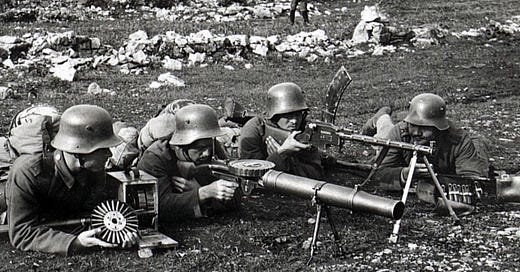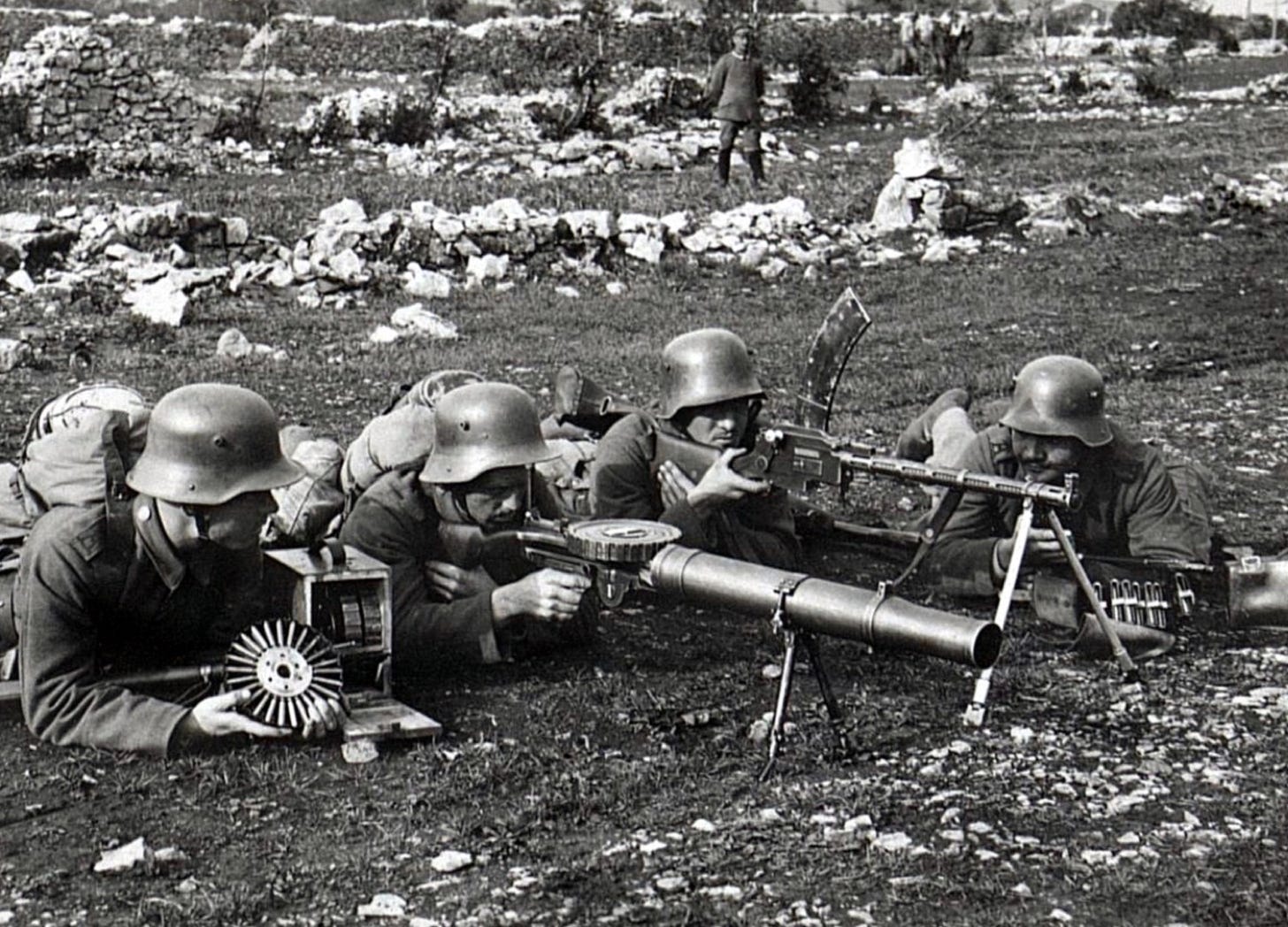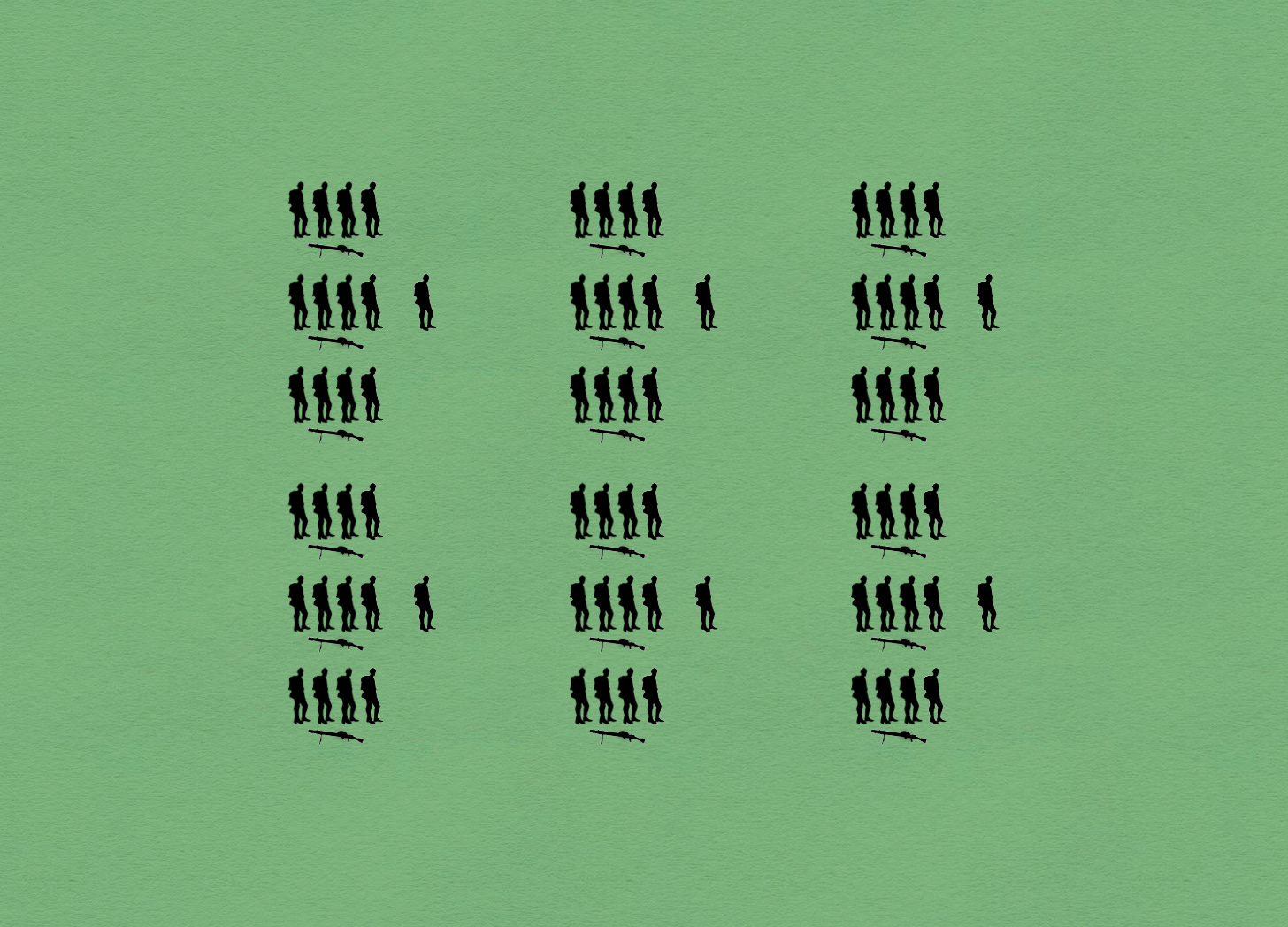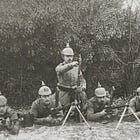On 24 February 1917, Ernst von Wrisberg (1862-1927), the officer at the Prussian War Ministry in charge of forming (and reforming) units, signed a letter instructing the 2nd Musketen Battalion to exchange its Madsen light machine guns for Lewis guns. In the course of doing this, the line companies of the smaller of the two Musketen Battalions would also exchange one table of organization for another.
The letter explaining the new establishment for the 2nd Musketen battalion explained that each Lewis gun would be served by a four-man team. These teams, in turn, would be grouped by threes to form squads, each of which was led by a non-commissioned officer (Unteroffizier.) Finally, the squads were paired off to form binary platoons. (One of these platoons was led by a lieutenant. The other two were placed in the charge of senior non-commissioned officers who wore the rank of Vizefeldwebel.)
This recasting of the 2nd Musketen Battalion may have resulted from a shortage of Madsen guns. (The order included instructions for using some of the Madsen guns to bring 1st Musketen Battalion up to establishment and sending the rest to the Rifle Testing Commission at Spandau.) It may also have been a reaction to shortage of personnel, whether in the 2nd Musketen Battalion or the Musketen community as a whole. (The order also made provision for transfer of soldiers made redundant by the reform to the training and replacement unit that supported both Musketen Battalions, Ersatz-Musketen-Kompanie Nr. 1.)
Sources: Prussian War Ministry, letter of 24 February 1917, preserved in Folder PH 3/1238 at the German Federal Archives [Bundesarchiv]. (For a stand-alone copy of the document, please visit this page at the Military Learning Library.)
To Share, Support, or Subscribe:
For Further Reading:









https://www.moore.army.mil/infantry/magazine/issues/2016/JAN-MAR/pdf/13)%20Nothstine_MachineGun_txt.pdf
The development of the machine gun
and it’s impact on the great war.
I assume they were using captured Lewis guns. Did indigenous ammunition which could be fired through the captured guns? Or did they have to ref fabricate ammunition to be fired through the guns. Using captured enemy weapons seems to be a trade-off using available resources and logistical problems of sustaining them.